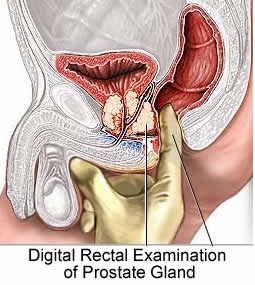A wide variety of treatments are available to ease the signs and symptoms of an enlarged prostate. They include medications, other nonsurgical therapies and surgical procedures.
Medications
Alpha blockers for prostate enlargement. These drugs were originally developed to treat high blood pressure. They relax the muscles at the neck of your bladder, making it easier to urinate. The FDA has approved four alpha blockers for prostate enlargement: terazosin (Hytrin), doxazosin (Cardura), tamsulosin (Flomax) and alfuzosin (Uroxatral).
Finasteride (Proscar, Propecia) and dutasteride (Avodart). These drugs relieve symptomsof enlarged prostate gland in a totally different manner than alpha blockers do. Instead of relaxing your muscles, they shrink your prostate gland. However, finasteride also shown to adversely affect sexual function and to slightly raise the risk of developing higher grade prostate cancer.
Nonsurgical therapies
Heat therapy for prostate enlargement uses heat energy delivered through the urethra to destroy excessive prostate tissue. It fills the gap between medications and invasive surgery. It's more effective than are medications for moderate to severe symptoms, and it doesn't produce as many side effects as surgery.
Microwave therapy for prostate enlargement. Transurethral microwave therapy (TUMT) uses computer-controlled heat in the form of microwave energy to safely destroy the inner portion of the enlarged prostate gland.
Radiofrequency therapy for prostate enlargement. Transurethral needle ablation (TUNA) works by sending radio waves through needles that are inserted into your enlarged prostate gland, heating and destroying the tissue. As in TUMT, a special catheter is inserted through your urethra. The needles are inserted into your prostate by maneuvering the catheter.
Laser therapy for prostate enlargement. This procedure is performed similarly to other heat therapies, except it uses a laser instead of microwave energy, radio waves or electrical current to produce heat. It generally doesn't cause impotence or prolonged incontinence.
Surgical and other procedures
Surgery is the most effective of all therapies for relieving symptoms of prostate gland enlargement. At one time surgery was the most common treatment for prostate enlargement. But because of increased use of medications and the development of other less invasive therapies, surgery is on the decline. Today it's used mainly for more severe signs and symptoms of prostate enlargement.
Transurethral resection of the prostate (TURP). A surgeon threads a narrow instrument (resectoscope) into your urethra and uses small cutting tools to scrape away excess prostate tissue. You can expect to stay in the hospital for one to three days after surgery. During your recovery, you'll have a urinary catheter in place for a few days.
In some cases, TURP can cause impotence and loss of bladder control. Generally, these conditions are only temporary. Pelvic floor muscle exercises (Kegels) often help restore bladder control. Normal sexual function often returns within a few weeks to months. Another more common side effect of surgery is retrograde ejaculation. Some men who have TURP may need some sort of prostate surgery again because the prostate grew back or the scar tissue from a previous procedure needs to be removed.
Transurethral incision of the prostate (TUIP). This surgery is an option if you have only a moderately enlarged or small prostate gland. It's also an option for men who aren't good candidates for more invasive surgery for health reasons or because they don't want to risk sterility.
The procedure produces less risk of complications than other kinds of surgery. It doesn't require an overnight hospital stay, but it's less effective and often needs to be repeated. Some men experience only a small improvement in urinary flow.
Open prostatectomy. This type of surgery is generally performed only if you have an excessively large prostate, bladder damage or other complicating factors, such as bladder stones or urethral strictures. It's called open because the surgeon makes an incision in your lower abdomen to reach the prostate rather than going up through the urethra. During an open prostatectomy, only the inner portion of your prostate gland is removed, leaving the outer portion intact.
Open prostatectomy is the safest and most effective therapy for men with extreme prostate enlargement. But it poses the greatest risk of side effects. Complications of the procedure are similar to those of TURP, and their effects may be more severe. The procedure usually requires a hospital stay of three to five days.




